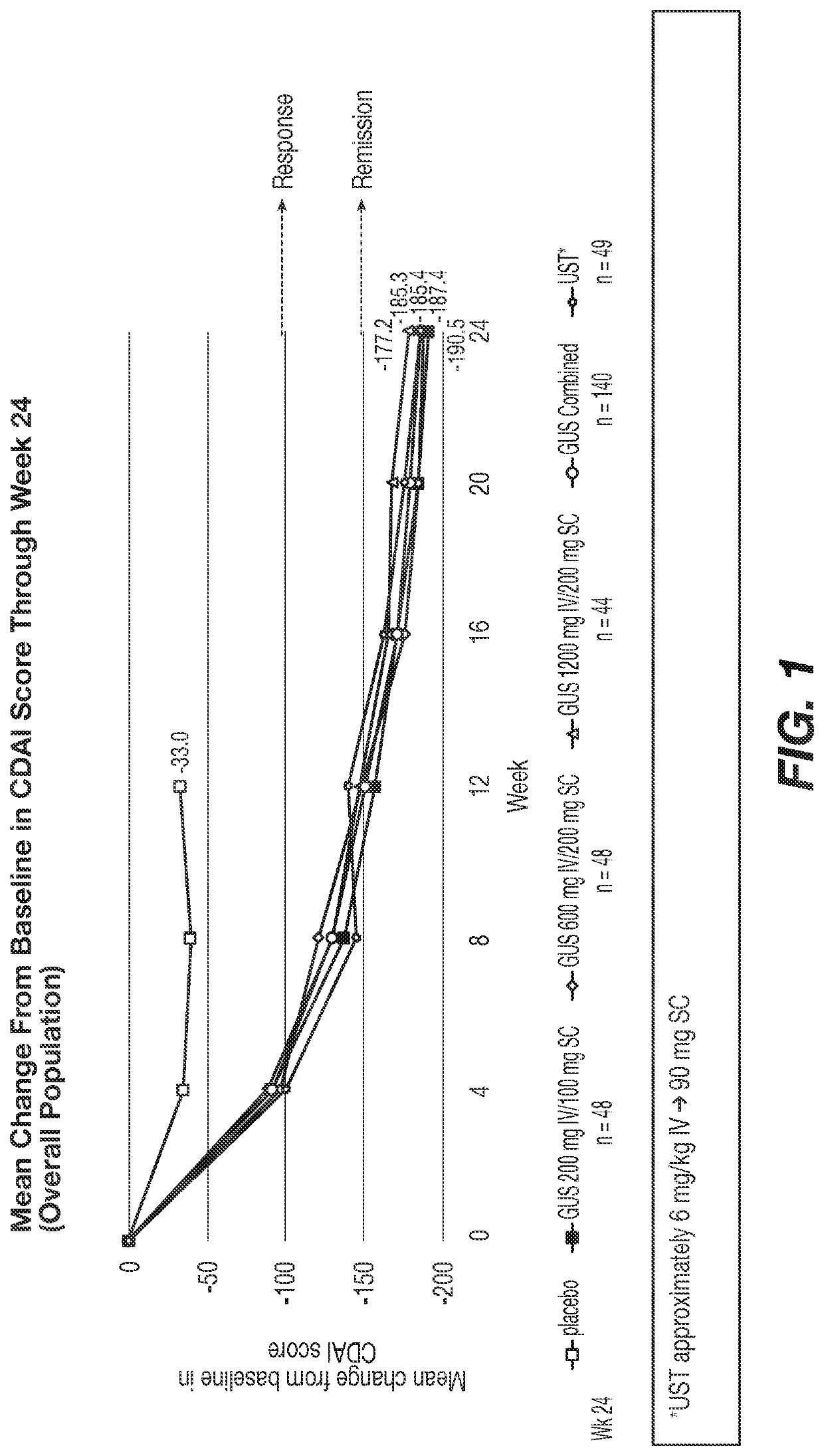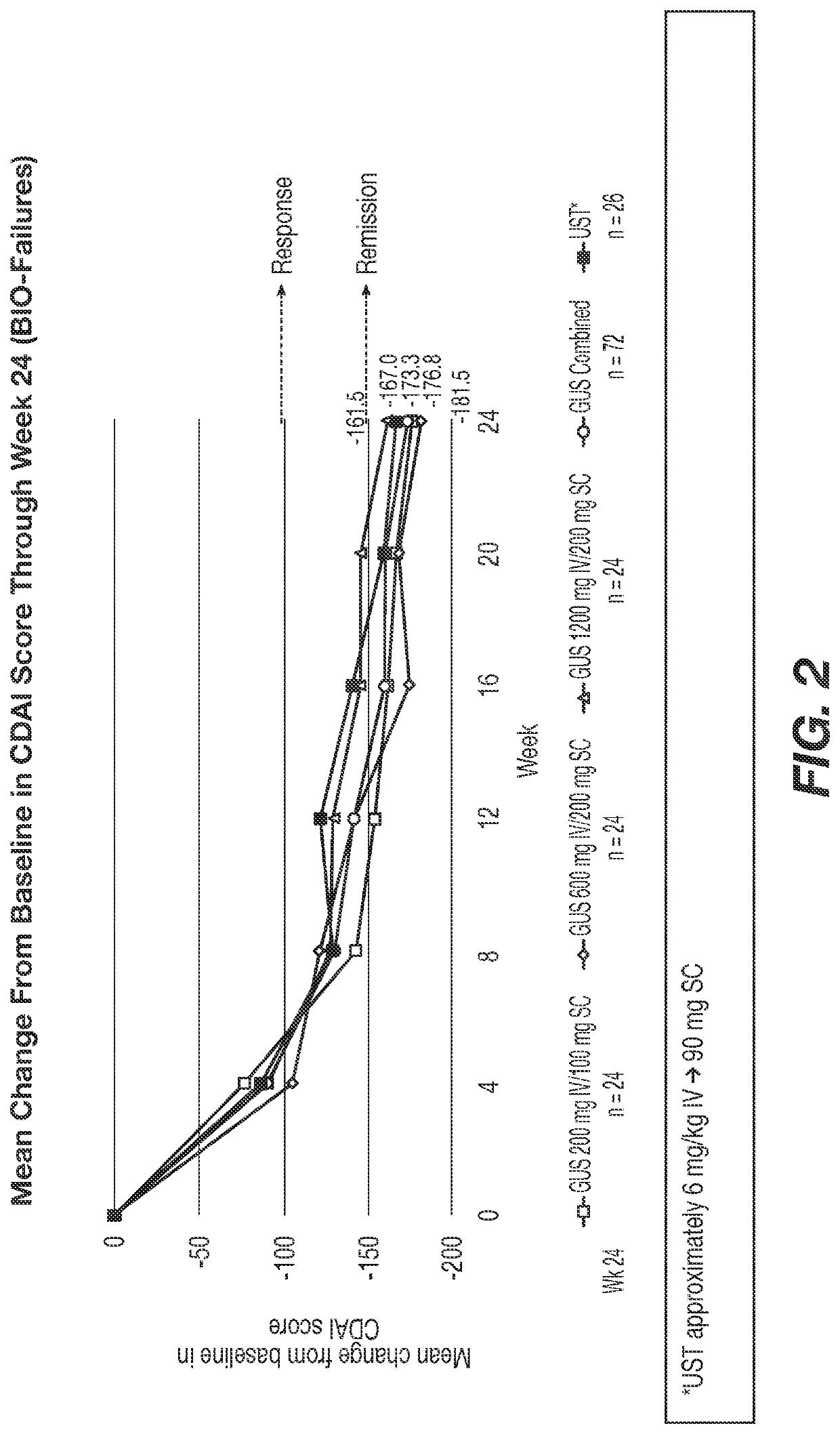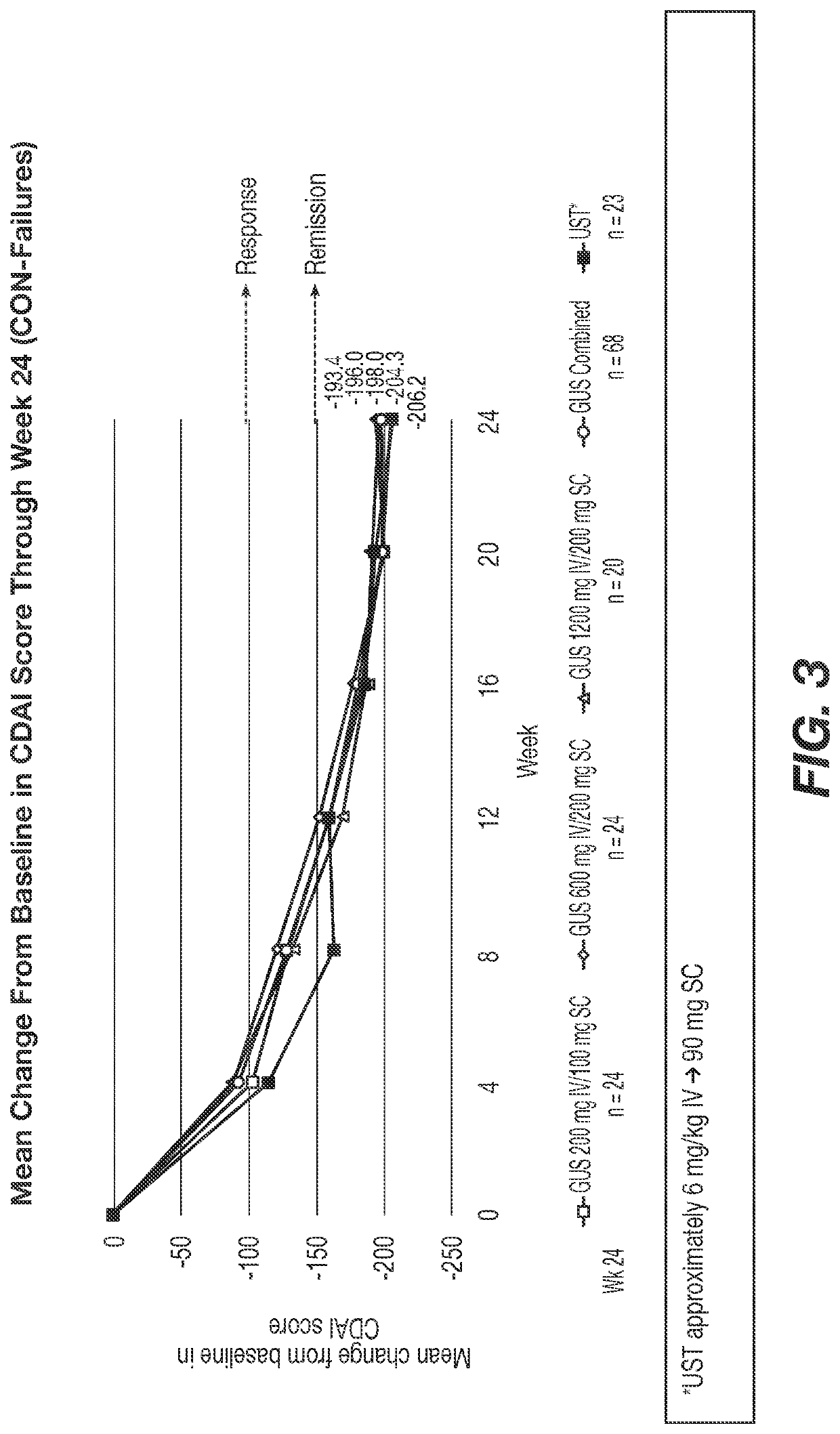Methods of Treating Crohn's Disease with Anti-IL23 Specific Antibody
a technology of specific antibodies and crohn's disease, applied in the direction of antibody medical ingredients, drug compositions, testing food, etc., can solve the problems of affecting the response rate or the sizable proportion of the target patient population is non-responsive or will lose the effect over tim
- Summary
- Abstract
- Description
- Claims
- Application Information
AI Technical Summary
Benefits of technology
Problems solved by technology
Method used
Image
Examples
example 1
Preclinical Evidence Implicating IL-23 as a Target in Crohn's Disease
[0206]Genetic and animal model studies have explored the contribution of IL-12 and IL-23 in driving the pathophysiology of Crohn's disease. The results indicate that IL-23 plays a predominant role in inflammatory bowel disease (IBD) and emerging evidence suggests that blocking IL-23 alone may be a more effective strategy than blocking both IL-12 and IL-23.
[0207]Initial observations from genetic and animal model data suggest that Crohn's disease is mediated by IL-12 and / or IL-23, potentially through the Th1 and Th17 pathways they induce, respectively. However, increasing evidence suggests a predominant role for IL-23 in Crohn's disease. Genome-wide association studies identified polymorphisms in the IL-23R gene that are associated with Crohn's disease. The role of IL-23 in driving intestinal inflammation has been shown in several mouse models. Mice treated with anti-IL-23 antibodies exhibited attenuated inflammation...
example 2
f Phase 2 GALAXI 1 Study at Week 12
Results
[0533]Two hundred fifty patients were included in the primary analysis population; about 50% had failed biologic therapy and about 50% failed conventional therapy. Baseline demographics and disease characteristics were generally similar among treatment groups (mean age, 39.4 years; mean weight, 70.0 kg; mean CD duration, 8.8 years; mean CDAI, 306.6; median PRO-2, 141.0; median SES-CD, 11.0).
[0534]Significantly greater reductions from baseline in CDAI were observed at Wk 12 in the GUS 200, 600, and 1200 mg IV groups vs placebo (LS means: −154.1, −144.3, −149.5 vs −36.0, respectively) and a higher proportion of pts on GUS achieved clinical remission (CDAI <150): 54.0%, 56.0%, 50.0% vs 15.7%, respectively (Table 1). Similarly, at Week 12, a higher proportion of patients treated with GUS achieved clinical response, PRO-2 remission, clinical-biomarker response, and endoscopic response vs patients treated with placebo. Among bio-failure patients, ...
PUM
| Property | Measurement | Unit |
|---|---|---|
| concentration | aaaaa | aaaaa |
| molecular weight | aaaaa | aaaaa |
| molecular weight | aaaaa | aaaaa |
Abstract
Description
Claims
Application Information
 Login to View More
Login to View More - R&D
- Intellectual Property
- Life Sciences
- Materials
- Tech Scout
- Unparalleled Data Quality
- Higher Quality Content
- 60% Fewer Hallucinations
Browse by: Latest US Patents, China's latest patents, Technical Efficacy Thesaurus, Application Domain, Technology Topic, Popular Technical Reports.
© 2025 PatSnap. All rights reserved.Legal|Privacy policy|Modern Slavery Act Transparency Statement|Sitemap|About US| Contact US: help@patsnap.com



